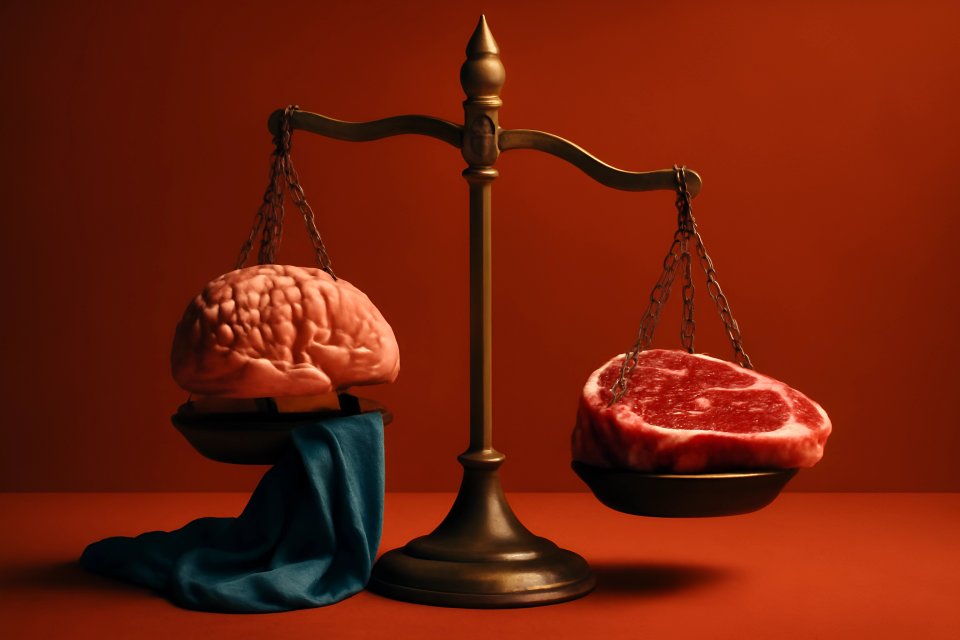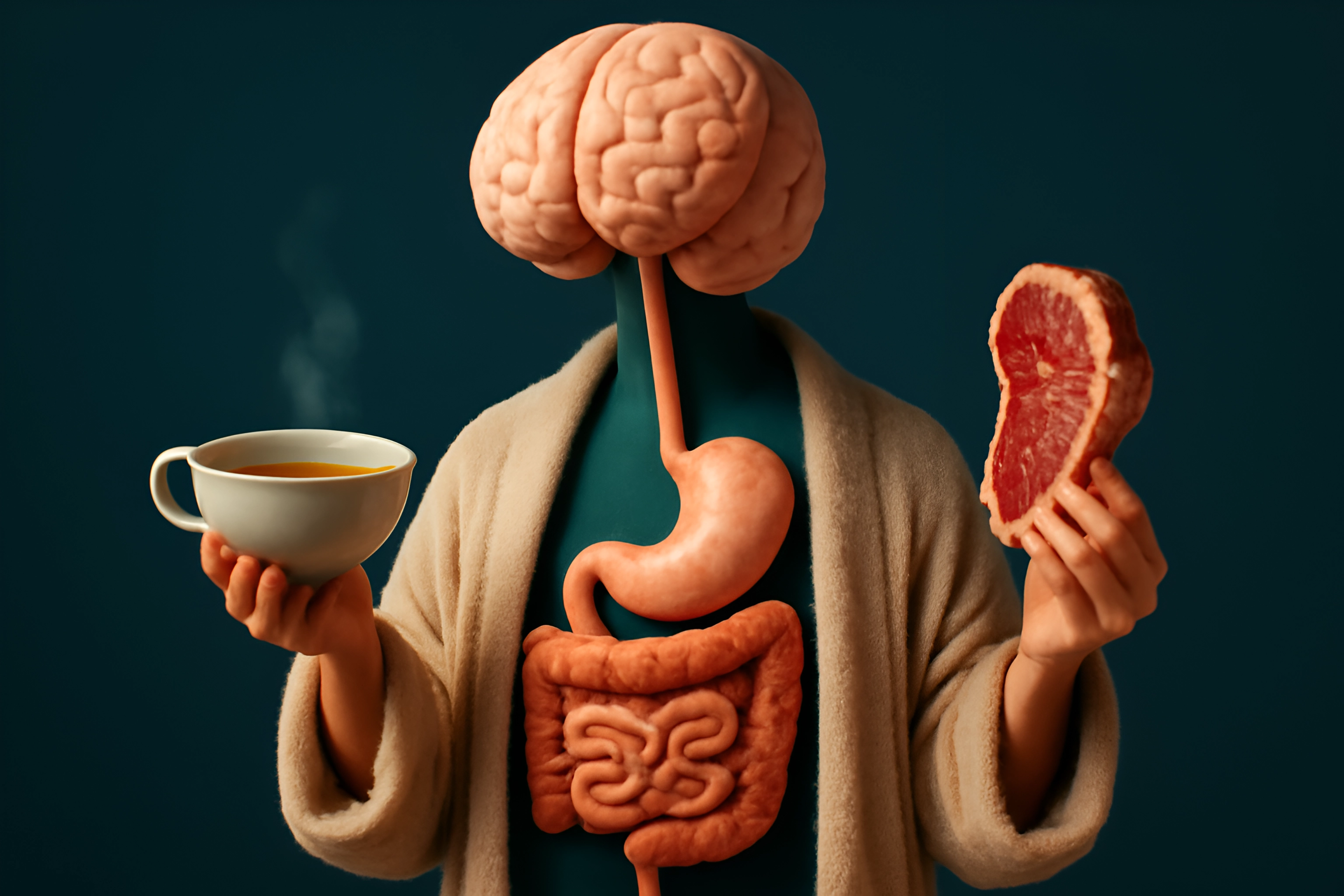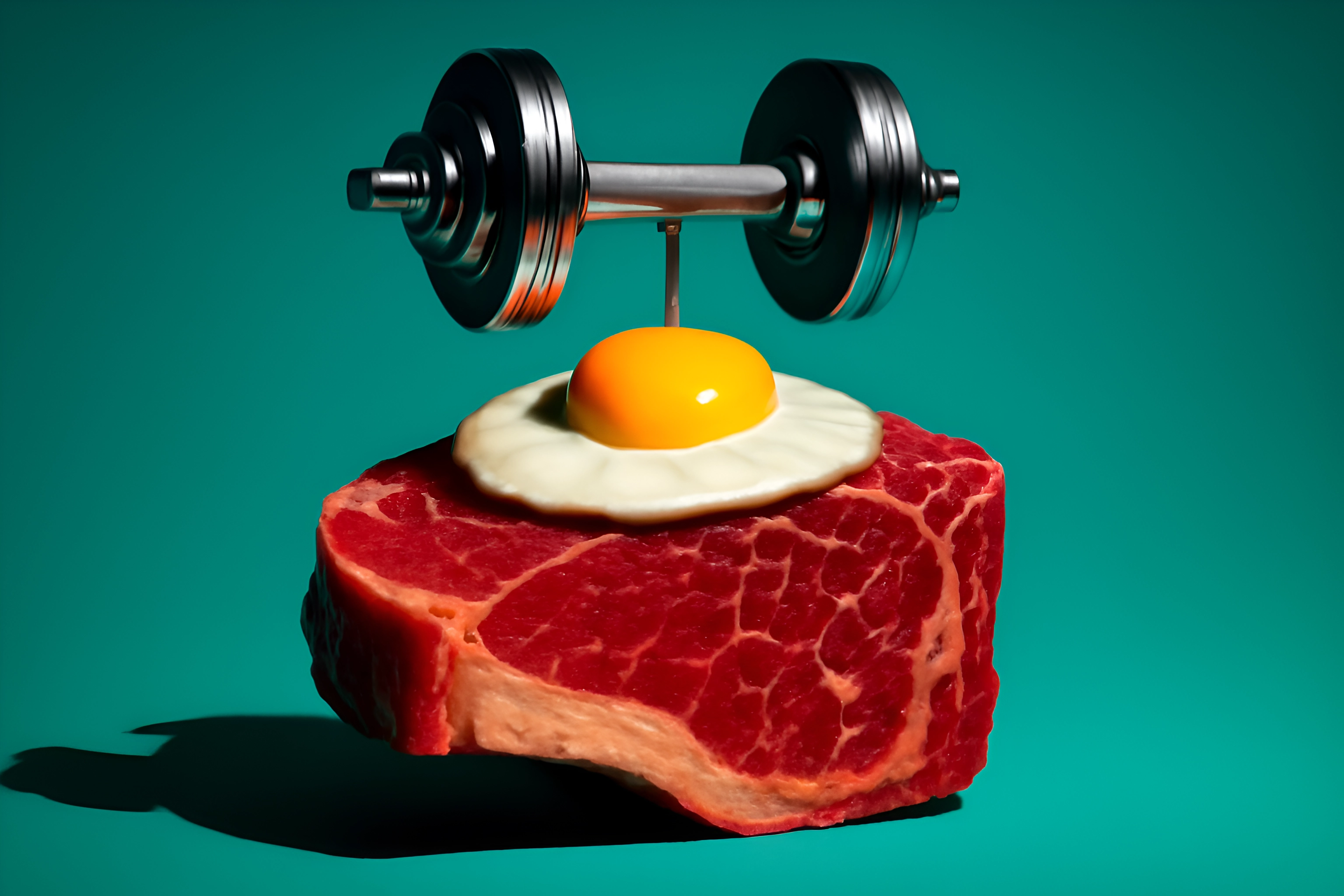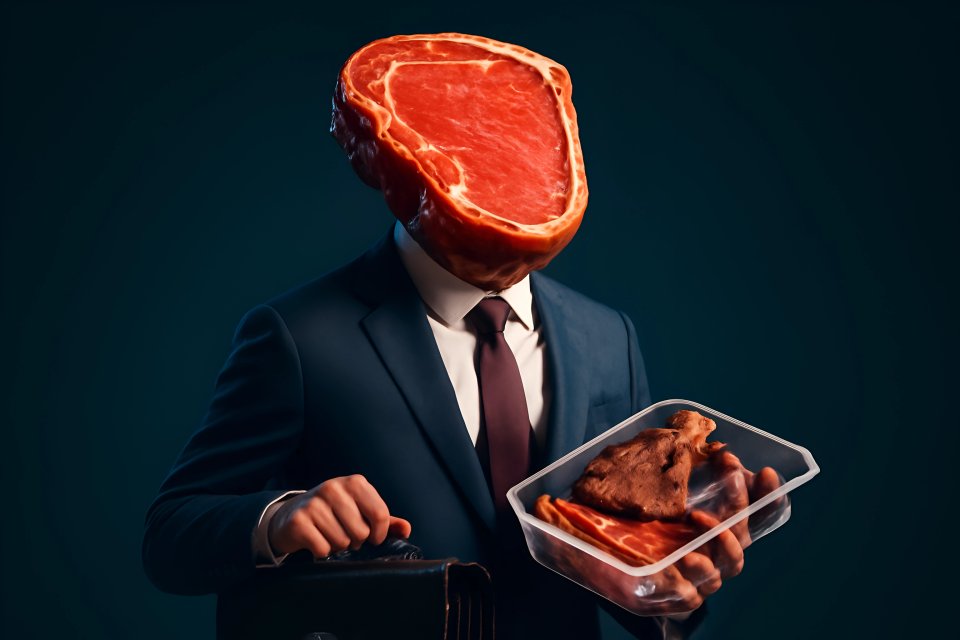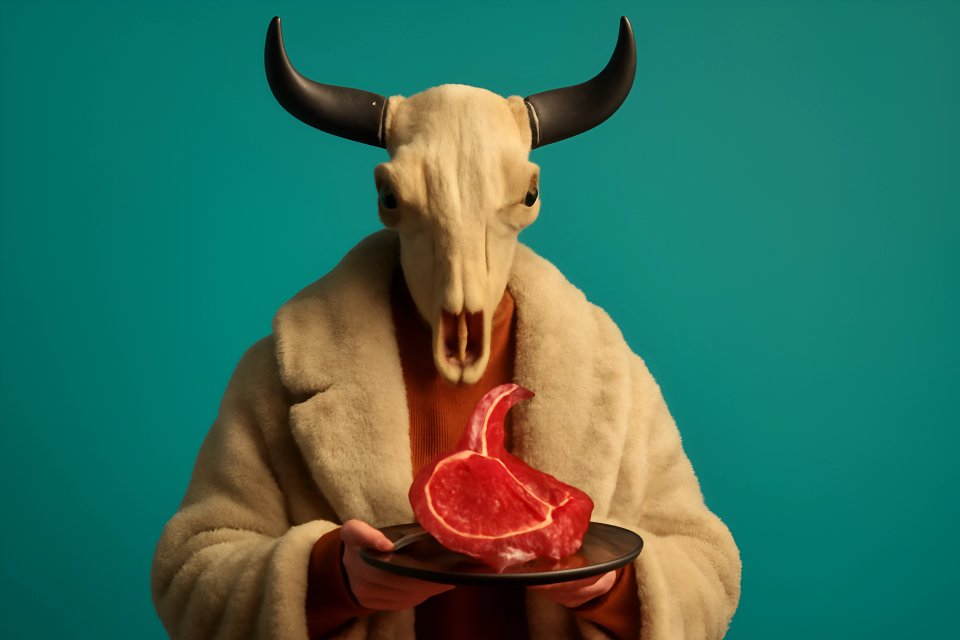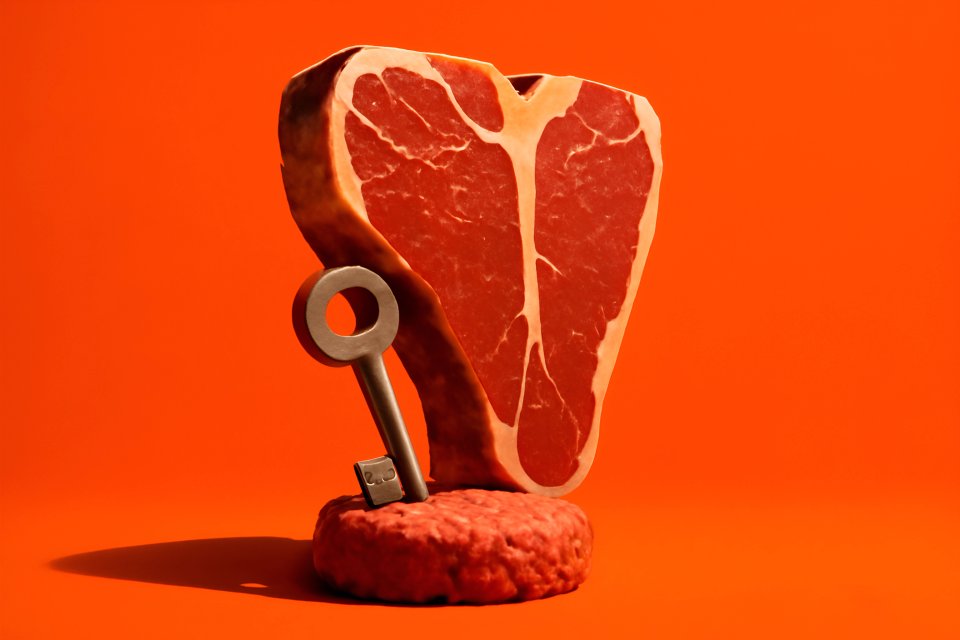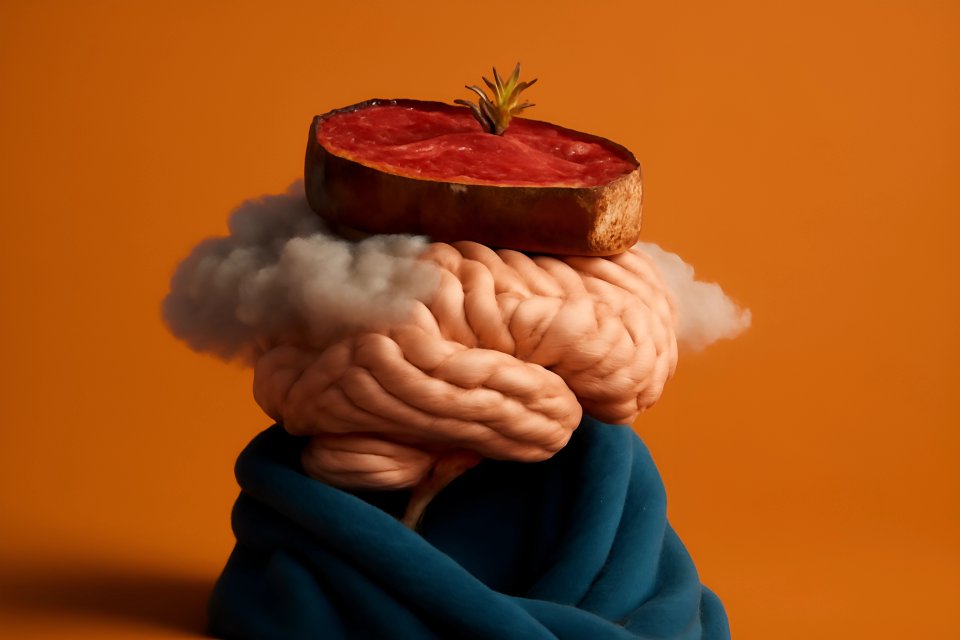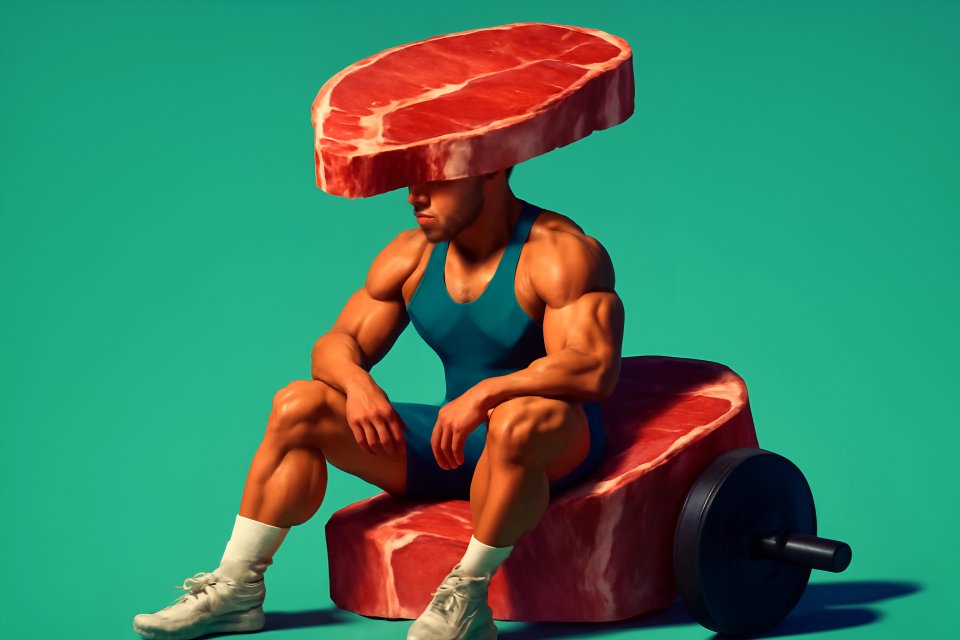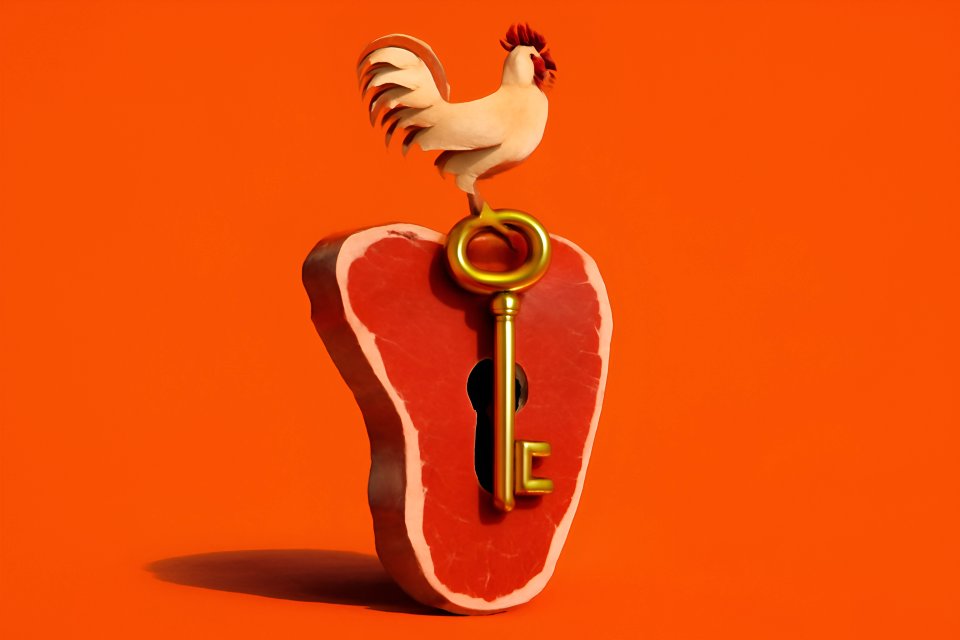
So, you've dived headfirst into the world of the carnivore diet. You've felt the surge of clean energy, the quieting of inflammation, the sheer simplicity of eating real, nourishing animal foods. But what if I told you there's another level? A way to amplify those incredible results, to push your body's healing capabilities even further? Are you ready to unlock a new dimension of vitality?
The carnivore diet, in its elegant simplicity, focuses on nutrient-dense animal products, eliminating plant-based irritants. Intermittent fasting (IF), on the other hand, is a pattern of eating that cycles between periods of voluntary fasting and eating. Separately, they are titans of transformation. But together? They create a synergy so potent, it can feel like discovering a cheat code for your health. This isn't just about skipping a meal; it's about strategically giving your body the rest it needs to repair and thrive.
This isn't some fleeting "diet hack." At HealingCarnivore, we're about profound, sustainable healing. We're talking about a powerful combination that can lead to accelerated fat loss, laser-sharp mental clarity, and robust metabolic health. We'll explore the science, the practical steps, and how to listen to your body to make this powerful duo work for you, helping you reclaim the vibrant health that is your birthright.
Quick Recap: The Power of the Carnivore Diet Foundation
Before we leap into the electrifying synergy of combining these approaches, let's ground ourselves in the bedrock: the carnivore diet. This isn't just a diet; for many, it's a revelation. The core principle is beautifully simple: eat animal products, and only animal products. We're talking juicy steaks, rich eggs, fatty fish, and perhaps some select dairy if your body agrees. This approach inherently provides an abundance of bioavailable nutrients, the very building blocks your body craves.
The magic of the carnivore diet lies not just in what you eat, but also in what you eliminate. By cutting out plants, you sidestep common irritants like lectins, oxalates, and phytates, which can wreak havoc on your gut and overall system. Many who embrace this way of eating report a dramatic reduction in inflammation, a healing of long-standing gut issues, newfound mental clarity, and energy levels so stable they feel like a superpower. As noted by researchers, the carnivore diet's emphasis on high-quality animal proteins and fats naturally stabilizes blood glucose levels, a key factor for sustained energy.
Here's the kicker, the HealingCarnivore touch: this way of eating naturally primes you for intermittent fasting. The incredible satiety you get from protein and fat means hunger pangs become a distant memory. Your blood sugar isn't on a rollercoaster, so those energy crashes that make fasting feel impossible on other diets? Gone. The carnivore diet lays a foundation of metabolic stability, making the transition to fasting not just easier, but often intuitive.
Understanding Intermittent Fasting (IF): More Than Just Skipping Meals
Now, let's talk about intermittent fasting, or IF. Forget the old, tired notion of "starvation mode." IF isn't about deprivation; it's about timing. It’s a conscious, voluntary decision to cycle between periods of eating and periods of not eating. Think of it as giving your digestive system a well-deserved break, allowing your body to shift its focus from constant digestion to deep cellular repair and rejuvenation.
There isn't a one-size-fits-all approach to IF. It's a flexible tool with various protocols, allowing you to find what resonates with your lifestyle and goals. Some popular methods include:
| Protocol Name | Fasting Window | Eating Window | Common Description |
|---|---|---|---|
| 16/8 (Leangains) | 16 hours | 8 hours | Skip breakfast, eat lunch and dinner. |
| 18/6 | 18 hours | 6 hours | A slightly longer fast, shorter eating window. |
| 20/4 (Warrior Diet) | 20 hours | 4 hours | One main meal, or a very condensed eating period. |
| OMAD | ~23 hours | ~1 hour | One Meal A Day. |
While longer fasts, like 24-36 hours, are an option for the more experienced, this post will primarily focus on these daily or near-daily IF structures. The beauty of IF, even independent of your diet, lies in its profound physiological benefits. We're talking about triggering autophagy, your body's cellular cleanup crew that removes damaged cells and regenerates new ones. Studies show IF can significantly improve insulin sensitivity, a cornerstone of metabolic health, and support cellular repair processes.
The Synergy: Why Combining Carnivore and IF is a Game-Changer
Imagine two powerful currents merging into an unstoppable river. That's the kind of dynamic energy we're talking about when the carnivore diet meets intermittent fasting. It's not just an addition; it's a multiplication of benefits. The inherent qualities of the carnivore diet don't just support IF; they make it feel almost effortless.
Think about it: the carnivore diet is king when it comes to satiety. Those rich, fatty meats and satisfying proteins keep you feeling full and content for hours. This means that when your fasting window begins, you're not battling gnawing hunger or irresistible cravings. Furthermore, by eliminating carbohydrates, the carnivore diet provides incredibly stable blood sugar levels. This metabolic stability, as highlighted in studies like one from PubMed Central, means no energy crashes, no desperate need for a sugary pick-me-up – just smooth, sustained energy that makes fasting a breeze.
But the magic flows both ways. Intermittent fasting takes the already impressive benefits of the carnivore diet and cranks them up a notch. If you're aiming for deeper ketosis, IF can help you get there faster and stay there longer. Your insulin sensitivity, already improving on carnivore, can reach new heights with regular fasting periods. And that incredible cellular clean-up process, autophagy? Fasting is its supercharger, potentially amplified by the anti-inflammatory nature of an all-meat diet, allowing for even more profound repair and rejuvenation. This combination trains your body to become a metabolic powerhouse, efficiently switching between fuel sources and optimizing every ounce of energy.
Key Benefits of Integrating IF with the Carnivore Diet
When you marry the principles of the carnivore diet with the strategic timing of intermittent fasting, you unlock a treasure trove of enhanced health outcomes. These aren't just minor tweaks; they are significant upgrades to your well-being. The intermittent fasting carnivore diet benefits are compelling and cover a wide spectrum of physiological improvements.
Accelerated & Sustainable Fat Loss
Tired of the fat loss rollercoaster? This combination offers a powerful, sustainable solution. Intermittent fasting helps by naturally reducing insulin levels and increasing growth hormone, both of which are crucial for fat burning. One study mentioned by Healthline notes that short-term fasting can increase metabolism by 3.6-14%. The carnivore diet, with its high satiety, makes it easier to maintain a natural calorie deficit without feeling deprived or constantly battling hunger. At HealingCarnivore, we focus on achieving a healthy body composition, building strength and vitality, not just chasing a number on the scale.
Improved Energy Levels & Mental Clarity
Say goodbye to brain fog and afternoon slumps! The stable blood glucose provided by the carnivore diet is already a game-changer for energy. Add IF, and you introduce ketones as a highly efficient fuel source for your brain. This combination can lead to a remarkable sharpening of focus, enhanced cognitive function, and a steady stream of energy that powers you through your day. This isn't just about feeling "okay"; it's about reclaiming the vibrant energy and mental sharpness that allows you to truly thrive.
Enhanced Metabolic Health
This is where the synergy truly shines, particularly for metabolic health with intermittent fasting. Both carnivore and IF are known to improve insulin sensitivity, a cornerstone of metabolic wellness. Research, such as a 2024 study published in PubMed Central, indicates that very low-carbohydrate diets like carnivore can significantly improve glycemic control. Combining this with IF can lead to even better blood sugar regulation and potentially a more favorable impact on blood lipids, helping your body become a well-oiled metabolic machine.
Deeper Autophagy & Cellular Repair
Autophagy is your body's innate cellular "spring cleaning" process, and fasting is its most potent trigger. During fasting, your cells clear out old, damaged components and regenerate new, healthy ones. The anti-inflammatory nature of the carnivore diet may further enhance this process, allowing for even deeper healing. This isn't just about feeling good today; it's about investing in your long-term vitality and potentially mitigating issues linked to cellular dysfunction. As MedicineNet points out, autophagy typically begins after 12-16 hours of fasting and peaks around 18-24 hours.
Further Reduction in Inflammation
Inflammation is at the root of so many modern ailments. The carnivore diet tackles this by eliminating common plant-based inflammatory triggers. Intermittent fasting adds another layer of anti-inflammatory power, helping to cool down systemic inflammation. Together, they form a formidable defense against chronic inflammation, paving the way for true healing.
Simplified Eating & Meal Prep
Love the simplicity of carnivore? Adding IF can make things even easier. With fewer meals to plan and prepare, you free up time and mental energy. This streamlined approach aligns perfectly with the HealingCarnivore philosophy of radical simplicity for radical results, making a healthy lifestyle more sustainable and less overwhelming.
Practical Guide: How to Implement IF on a Carnivore Diet
Ready to explore the powerful carnivore fasting protocols? The key is to approach this intelligently and listen to your body every step of the way. This isn't a race; it's about finding a sustainable rhythm that enhances your carnivore journey.
Start Slow & Listen to Your Body
This cannot be stressed enough: ease into it. If you're new to the carnivore diet, give your body ample time to adapt to this way of eating first – typically a few weeks to a month. Once you're feeling solid on carnivore, then you can begin to experiment with gradually extending your natural overnight fast. Pay attention to your energy levels, hunger cues, and overall well-being. Your body will give you signals; learn to interpret them.
Choosing Your Fasting Protocol
There are several effective carnivore fasting protocols to consider. Many find the 16/8 method (fasting for 16 hours, eating within an 8-hour window) an accessible starting point. For example, you might finish dinner by 7 PM and have your first meal the next day at 11 AM. As you become more comfortable, you might explore an 18/6 (18-hour fast, 6-hour eating window) or even a 20/4 protocol, sometimes called the Warrior Diet. OMAD (One Meal A Day) is also popular within the carnivore community; if you choose this, it's crucial to ensure you're consuming adequate calories and nutrients in that single meal to fuel your body properly.
What to Consume During Your Fasting Window
Keep it simple and clean during your fasting hours. Water is your best friend – stay well-hydrated. Black coffee or unsweetened tea (herbal or black) are generally acceptable and won't break your fast for autophagy benefits. Crucially, especially on a carnivore diet combined with IF, electrolytes are non-negotiable. This means ensuring adequate intake of salt, potassium, and magnesium. Many find adding a pinch of quality sea salt to their water helps immensely.
What to Eat During Your Eating Window
When it's time to eat, feast on nutrient-dense animal foods. Prioritize fatty cuts of meat, eggs, and organ meats if you include them (and we at HealingCarnivore highly recommend exploring the benefits of organ meats!). Ensure you're getting enough protein to support muscle maintenance and repair, and plenty of healthy animal fats for energy and satiety. The goal is to nourish your body deeply, not to chronically undereat. Remember, the carnivore diet is not inherently lacking in essential nutrients, a concept we explore when debunking carnivore diet fiber myths.
Timing Your Workouts
If you're active, you might wonder about workout timing. Some people thrive on fasted workouts, finding they have great energy and focus. Others prefer to exercise within their eating window or shortly after a meal. There's no single right answer; experiment to see what feels best for your body and performance. Listen to your energy levels and adjust accordingly.
Potential Challenges and How to Navigate Them
Embarking on the journey of combining intermittent fasting with your carnivore lifestyle is exciting, but like any significant shift, it can come with a few bumps in the road. Being aware of potential challenges and knowing how to navigate them will set you up for success and a smoother transition. Remember, this is about sustainable health, not a sprint to an arbitrary finish line.
One of the first things you might encounter is initial hunger or an adjustment period. As your body adapts to new eating windows, especially if you're extending your fasts, you might feel hunger pangs more acutely at first. The good news is that the high satiety of the carnivore diet usually makes this manageable. Ensure you're well-hydrated, as thirst can often be mistaken for hunger. A pinch of salt in your water can also help. Be patient with yourself; this phase typically passes as your body recalibrates.
Electrolyte imbalance is a critical consideration, particularly potent on a low-carb approach like carnivore, and even more so when fasting. Symptoms can include headaches, fatigue, muscle cramps, or dizziness. The solution is proactive electrolyte management: ensure adequate intake of sodium (quality sea salt), potassium, and magnesium. Many carnivores find they need to consciously supplement these, especially when starting IF. If you're unsure, exploring a dedicated guide to electrolytes on carnivore can be incredibly helpful. (Note: This link is illustrative; a specific electrolyte guide would be ideal here if available).
Social situations can sometimes feel tricky. Navigating meals out or family gatherings when you have a specific eating window requires a bit of planning. You might adjust your fasting schedule for that day, choose carnivore-friendly options if you're eating out during your window, or simply enjoy a glass of water or black coffee if it's during your fast. Clear communication and confidence in your choices go a long way. And remember, the goal is consistency, not perfection; one off-schedule meal won't derail your progress.
A very real concern, especially with more restrictive eating windows like OMAD, is the risk of undereating. While IF can aid fat loss, chronically under-fueling your body is detrimental. It's vital to ensure your meals within the eating window are nutrient-dense and calorically sufficient to meet your body's needs. Focus on fatty meats and ensure you're eating until truly satiated. This is about nourishing your body, not starving it.
Finally, it's crucial to acknowledge who should be cautious. While IF and carnivore can be transformative for many, they aren't suitable for everyone. Pregnant or nursing women, individuals with a history of eating disorders, those with certain pre-existing medical conditions (like hypoglycemia or adrenal issues), or growing adolescents should approach with extreme caution and always consult a knowledgeable healthcare professional before making significant dietary changes. At HealingCarnivore, we frame this as responsible self-care – knowing when to seek guidance is a strength.
Tips for Success & Optimizing Your Experience
You're armed with the knowledge, you understand the synergy, and you're ready to navigate the challenges. Now, let's talk about those extra touches, the refinements that can take your experience from good to truly exceptional. These tips are about fine-tuning your approach to intermittent fasting on the carnivore diet, ensuring you reap all the rewards.
First and foremost, prioritize sleep. It might sound unrelated, but sleep is the unsung hero of health, especially when you're asking your body to adapt and heal. Quality sleep is crucial for hormone balance (think cortisol, insulin, growth hormone) and overall recovery. Aim for 7-9 hours of quality, uninterrupted sleep each night. This alone can significantly enhance the benefits you experience from IF and carnivore.
Next, manage stress. Chronic stress is a saboteur of health goals. It can elevate cortisol, which can, in turn, increase cravings, disrupt sleep, and negate many of the positive effects of your dietary efforts. Incorporate stress-reducing practices into your daily routine – whether it's meditation, deep breathing exercises, spending time in nature, or engaging in hobbies you love. Your body will thank you.
Stay impeccably hydrated. This is always important, but it takes on even greater significance during fasting periods. Water is essential for detoxification, cellular function, and can help manage hunger cues. Aim for plenty of fluids throughout the day, especially during your fasting window. Adding electrolytes to your water, as mentioned before, is a pro-move.
Don't fear fat! On a carnivore diet, particularly when incorporating intermittent fasting, animal fats are your primary fuel source. They provide sustained energy, promote satiety, and are crucial for the absorption of fat-soluble vitamins. Embrace those fatty cuts of meat, cook with tallow or butter, and enjoy those rich egg yolks. This is key to feeling satisfied and energized, making your fasting windows much more manageable. The reduction in inflammation from this combined approach can even lead to improvements in conditions like those discussed in our carnivore diet for skin health article.
Keep a simple journal to track how you feel. Note your energy levels, mood, digestion, mental clarity, and even your workout performance. This personal data is invaluable. It helps you identify patterns, understand what's working best for your unique physiology, and make informed adjustments to your fasting schedule or food choices.
Finally, and perhaps most importantly, be flexible. Life happens. Some days, a shorter fast might be what your body needs. Other days, you might effortlessly extend it. This isn't about rigid dogma or punishing yourself. It's about creating a sustainable lifestyle that supports your health and vitality in the long run. Listen to your body's signals and adjust as needed.
Conclusion: Unlocking a New Level of Healing and Vitality with Carnivore + IF
You've journeyed with us through the compelling landscape where the primal power of the carnivore diet converges with the profound cellular wisdom of intermittent fasting. It's clear that this isn't just about combining two "diets"; it's about unlocking a synergistic force that can elevate your health to an entirely new plane. The benefits are not just theoretical; they are tangible: accelerated and sustainable fat loss, unwavering energy, crystal-clear mental focus, enhanced metabolic health, and deep cellular repair.
This combination empowers you to take control of your biology in a way that few other approaches can. It’s about working with your body's innate design, not against it. By providing nutrient-dense, ancestrally appropriate foods and then strategically allowing periods of rest and repair, you create an internal environment ripe for profound healing and optimization. This is the essence of the HealingCarnivore promise: radical simplicity for radical transformation.
Now, the power is in your hands. Are you ready to experiment, to listen to your body, and to discover what this potent combination can do for you? This is another powerful tool in your arsenal for reclaiming the vibrant health and boundless vitality that is your birthright.
Are you practicing IF with your carnivore diet? Share your experiences, your triumphs, and your tips in the comments below! Your journey can inspire others.
For more carnivore diet resources, support, and to dive deeper into optimizing your health, explore other articles and guides here on HealingCarnivore.
